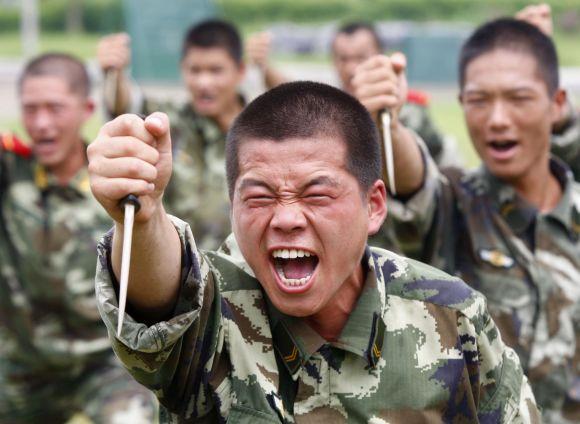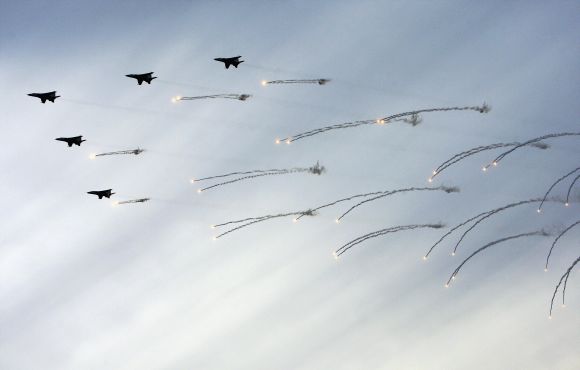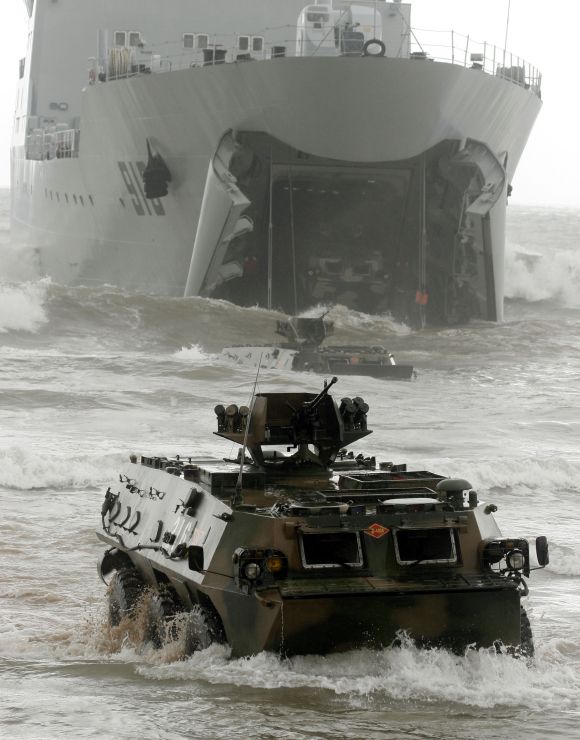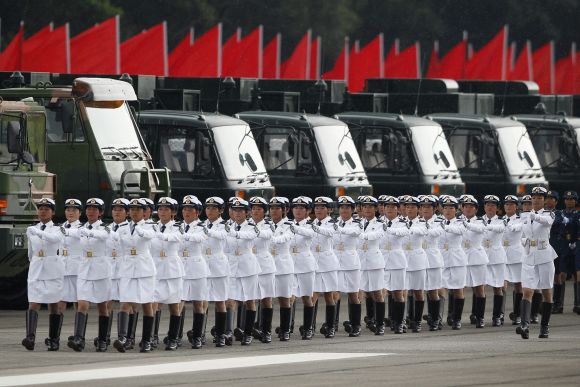
A hike in China's defence budget has got defence experts and analysts debating the country's rising military power and clout.
The 10 per cent hike this year comes when China is rapidly modernising its armed forces in the back drop of deepening stand off with Japan over the disputed islands as well as differences with several South Asian Countries over the South China Sea.
So where does China stand in the world among the top military spenders?
Top military spenders
United States - 711.0 billion dollars
China – 143.0 billion dollars
Russia – 71.9 billion dollars
United Kingdom – 62.7 billion dollars
France – 62.5 billion dollars
Japan – 53.9 billion dollars
India – 48.9 billion dollars
This list from the Stockholm International Peace Research Institute Yearbook 2012 includes a list on the world's top 15 military spenders in 2011. India ranks seventh.
...

The United States remains the world's dominant military power spending much more than any other country on defense and security. It has spent more on its military than the next 13 nations combined (China, Russia, UK, France, Japan, India, Saudi Arabia, Germnay...) in 2011 on a list complied by the Stockholm International Peace Research Institute.
Since 2001, the base defense budget has soared from $287 billion to $530 billion -- and that's before accounting for the primary costs of the Iraq and Afghanistan wars, reports the Washington Post
A post on defense-update.com says that China's military developments are fuelled by continuing increases in defence spending. China now spends more on defence than neighbouring Japan, South Korea and Taiwan combined. If the 15 per cent average annual increases in China's official defence spending seen over the past decade continue into the medium term, Chinese defence outlays could rival US base defence-budget spending by 2025.
The International Institute for Strategic Studies in its report has said that the increase in Asian spending has been so rapid, and the defence austerity pursued by European states so severe, that in 2012 nominal Asian spending $287.4 billion (192.3 billion pounds) exceeded total official defence spending not just in NATO Europe, but across all of Europe, including spending by non-NATO European states.
...

India has hiked its military spending to Rs 203,672 crore ($37 billion), an increase of five percent over the Rs.193,407 crore outlay for 2012-13 but an increase of 14 percent in real terms.
The budget hike, in real terms, amounts to Rs. 25,168 crore ($4.57 billion) over the revised estimates of Rs 178, 504 crore for the fiscal ending March 31. It translates into 14 per cent increase.
The finance ministry had reduced the defence ministry's capital expenditure in the current fiscal by Rs 10,000 crore in its revised estimates, pegging it at Rs 69,579 crore from the initial figure of Rs 79,579 crore.
China's has hiked its defence budget by 10.7 per cent to $115.7 billion well above this year's Indian defence spending of $37.4 billion.
...

The Stockholm International Peace Research Institute has said Chinese arms exports rose 162 per cent between 2008 to 2012, propelling China into the top five arms exporting countries for the first time since the cold war. This marks the first time that the UK has not been one of the top five conventional arms exporters since at least 1950, the earliest year covered by Sipri data, reported the Financial Times.
According to the Stockholm International Peace Research Institute, Pakistan accounted for 55 per cent of Chinese arms exports between 2008 and 2012.
Between 2008 and 2012, China ranked second behind India, with 69 per cent of all Chinese weapons imports originating in Russia.
...

To face a rising China, India has resolved to modernise its military. India has decided to buy 126 fighter jets from France, taken delivery of a nuclear-powered submarine from Russia and prepared for its first aircraft carrier.
India, the world's biggest arms importer in recent years, plans to spend around $100 billion over the next 10 years in upgrading its mostly Soviet-era military hardware to keep pace with China's ramping up of defence spending.
The country was bound to modernise its armed forces in response to China's own modernisation, Defence Minister A K Antony said at an air show in Bangalore, adding that strengthening its north-eastern border with China was not a confrontation with its neighbour, Reuters reported.
Many international analysts assert that China's annual defense budget is far higher than Beijing announces, although the Chinese government steadfastly maintains that the published statistics are the actual amount.
In addition to its announced defense expenditures China is allocating more than $110 billion annually for internal security, a figure analysts say is designed not only to allow police to maintain tight control over people, but in unsettled border regions such as Xinjiang and Tibet.
China's military shipyards now are surpassing Western European, Japanese, and Korean military shipbuilders in terms of both the types and numbers of ships they can build.
If Beijing prioritizes progress, China's military shipbuilding technical capabilities can likely become as good as Russia's are now by 2020 and will near current US shipbuilding technical proficiency levels by 2030, The Diplomat reports.
...